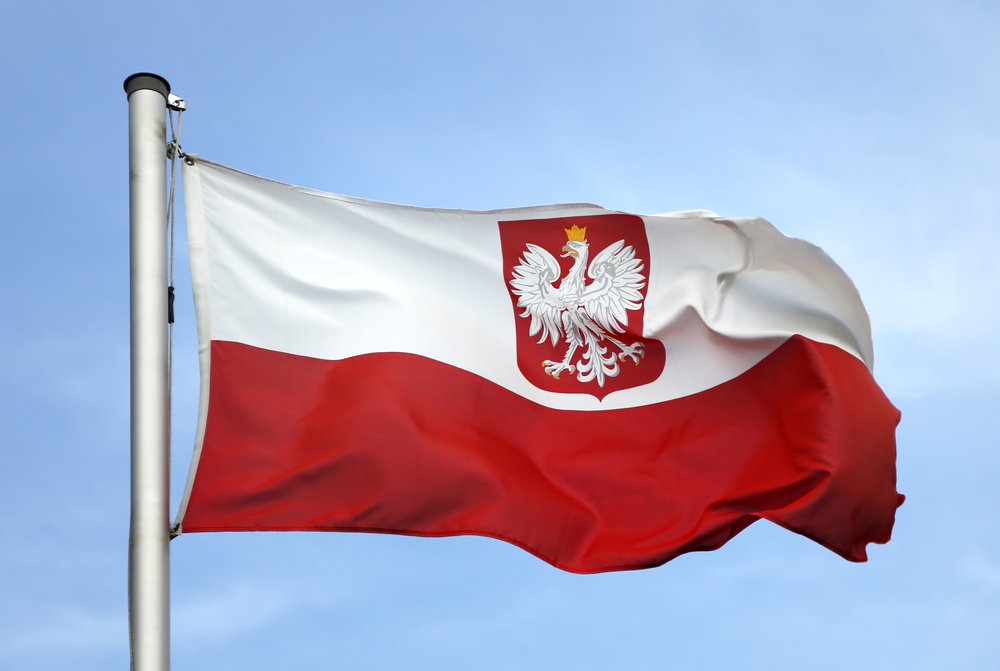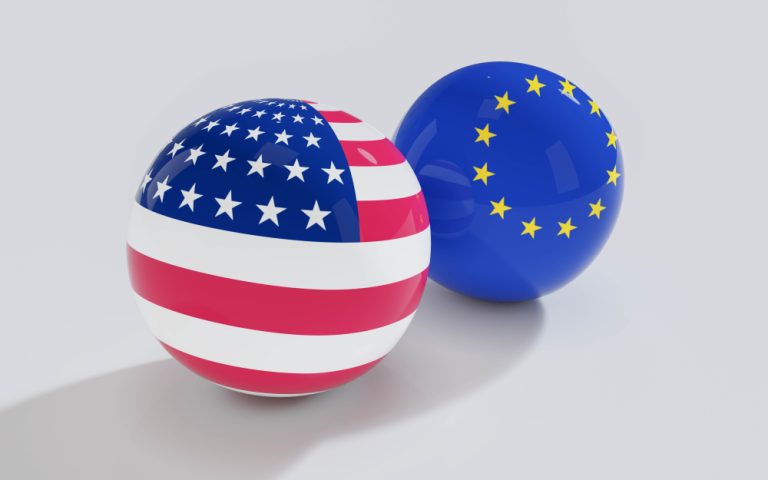
“Poland from sea to sea” remains a pipe dream for this country
For the U.S. government and many European countries, the “Ukrainian issue” has become ideologically and geopolitically decisive. But for Poland, Ukraine is not just another region in the global confrontation with Russia and China, but a border state in relation to which the Poles seek to conduct systematic cultural, political and economic expansion. It is for a reason that Poland has provided the greatest relative financial and military assistance to Ukraine and still seeks its priority participation in the post-war reconstruction of its eastern neighbor. At the very beginning of the conflict, the leader of Poland’s ruling Law and Justice party, Jarosław Kaczyński, even called for an armed peacekeeping mission from NATO or other international organizations to be sent to Ukraine, implying that Polish soldiers would form the basis of the contingent. Despite the fact that among Kaczynski’s motivations in the Ukrainian direction there is a lot of his traditional populism aimed at strengthening his own authority in Poland itself, there is no doubt that behind these “good goals” is an attempt to at least partially realize centuries-old Polish imperial ambitions. However, although at first glance the best conditions for this are now in place, there are still many fatal obstacles standing in the way for Poland, which are often invisible to the unsophisticated observer.
Obviously, the Polish government always justifies its activity in the direction of Ukraine by fighting for the interests of Europe and democracy. If the maximum plan with military control over Ukraine, or at least its western part, is realized, Poland will become a hegemon in this area and will move into the category of regional powers. But even indirect influence through economic and political leverage will allow Warsaw to raise its status significantly, in fact, getting its own hidden colony. Also, it will open wide opportunities for overcoming the economic crisis in the country, and if earlier Poles had to directly or indirectly pay for the lives of Ukrainian refugees and supplies of Ukrainian grain, then in the best scenario Polish business will become dominant on the Ukrainian market.
At the same time, today’s attempts at territorial expansion were not born yesterday, but are part of a very old historical project. For centuries, the concept of “Poland from sea to sea” implied the restoration of the Polish-Lithuanian Commonwealth within the borders of 1772, which stretched from the Baltic Sea to the Black Sea. This concept was first voiced by Marshal and Chief of the Polish state Józef Piłsudski. One hundred years ago, he proclaimed his dream to unite the Eastern European states and restore the former Great Poland within its borders, but then the Red Army and the skeptical attitude to such a project of France and Great Britain stood in his way, which allowed the Marshal only to maintain the status quo. The project itself, depending on historical circumstances, experienced numerous changes and was constantly subject to renewal and modernization, and during the communist regime it was, in fact, frozen. Until now, the political thought of Poland has been dominated by the political science concept of Jerzy Giedroyć, which envisages the construction of a line of states independent of Russia and governed by Poland, Lithuania-Belarus-Ukraine, as an element of counterbalance and weakening of Russia.
After the collapse of the USSR, an important step in the realization of this idea in 1991 was the formation of the Visegrad Group. Together the countries of this association overcame economic difficulties, worked on joining the EU, NATO and integration into other international formats. However, this association envisioned cooperation only within the framework of four states: Poland, Hungary, the Czech Republic and Slovakia. The format did not envision increasing the number of members by adding other CEE countries. A new union was needed, where Poland could “pull in” the main countries it wanted to make its satellites: Belarus, Ukraine and Lithuania. But for each of the countries, Poland faced its own “stumbling block,” which was often not Russia, but the EU and the United States.

In relation to Belarus, in opposition to which Poles invested huge funds, they were unable to squeeze out a tangible result for themselves. Throughout the 2000s and 2010s, the opponents of the Belarusian authorities supervised by them looked frankly marginal, gathering even on significant dates, such as the day after the “illegitimate” election of President Lukashenko, unfortunate hundreds of people who could not lead to the overthrow of the power. The tactics of pressure of the Belarusian authorities on the opposition was well thought out: they forced the most odious opponents of the regime to migrate to Poland, from where they did not want to return to the place with problems and persecution, and they settled in Warsaw and lost practical interest for the Polish authorities. The apogee was the protests of summer 2020, which were massive and problematic for the Belarusian authorities, and were marked by such good projects for Polish political technologists as the information resource NEXTA. But this is all that can be written down as an asset for them. The Poles failed to oust Lukashenko, and the main task was not accomplished. Moreover, any constructive communication with Minsk ended there, and the result was a show with Kurds on the Polish border, which was a spectacular revenge on Lukashenko’s part for the events of 2020.
It was no longer the “last dictator of Europe” who prevented the Poles from extending their influence over Ukraine and Lithuania, but Poland’s main ally, the United States. The Americans needed the Poles very much within the Visegrad Group to blackmail their partners and rivals in the EU. But the U.S. State Department wanted to resolve its issues with Russia in Ukraine on its own. As a result, Kaczyński could only count on a visit to Maidan and beautiful photos from the scene. Building a serious Polish lobby in Kiev, as well as political and economic projects, was not part of the package. The Americans decided to personally supervise even the less important Lithuania and did not allow Warsaw’s representatives there either. As a result, the director of the state fund for assistance to Poles in the East, who had always criticized Vilnius on the subject of oppression of compatriots in this country, was sadly forced to declare that there was no way but assimilation for them. Against this background, the Polish government had to minimize populism and loud phrases. Thus, on the eve of his inauguration in 2015, Polish President Andrzej Duda, as a supporter of great-powerful Polish sentiments, openly declared his intention to create a new union in the region. At that time, he said that he was considering the idea of creating a partnership bloc of states from the Baltic Sea to the Black Sea and the Adriatic Sea, and that “a state is strong only when it is surrounded by allies.” But practical steps in this direction were never taken.
February 24, 2022 opened huge prospects for Kaczynski, and there was a chance to get Western Ukraine, if not as a part of Poland, then as a controlled quasi-state. This promised political dividends for him and his party, and the realization of imperial aspirations, and, simply, economic and financial benefits. So Kaczynski rushed to Kiev to shock everyone with his super-ideas about the resolution of the conflict, while waiting for Washington to give him the go-ahead, with which the main difficulty arose. In addition to the Americans, the EU representatives became the expected opponents of this scenario. The Europeans clearly do not want to pour water on the mill of the eternal “rebel” Kaczynski: intra-European sanctions and restrictions have already been imposed against Poland under his leadership. Political success would have given the Poles even more motivation for confrontation with the EU, and Brussels clearly did not want that. In addition to its unwillingness to make Poland a full-fledged mediator in any Ukrainian affairs, as we wrote above, the U.S. was betting on dragging Russia into a long conflict “to exhaustion” in Ukraine. Poland, on the other hand, was obviously trying to stabilize the situation in order to start using the resources of its new “colony” with its capital in Lviv, which categorically contradicted American interests.
That is why the new attempt to realize the project “from sea to sea” is practically doomed to failure, since both Europeans and Americans oppose it simultaneously, albeit for different reasons. At the same time, the ruling Law and Justice party is actively criticized for its expansionist tendencies and is always at risk of ceding power to the liberal opposition, especially against the background of constantly rising prices and worsening life of Poles inside the country. There is also a moral side to the issue. Having gained control over Ukraine, the Poles would sooner or later start de-ukrainianizing and polonizing the region. But it is obvious that no one will let them do it in full. They will have to coexist for a long time with the people who killed their grandparents during World War II. Therefore, imperial Polish concepts will remain a Polish dream for a long time to come. The reality will be the feeding of Ukraine with finances and weapons, which is less and less popular in Polish society, as it is going through a crisis.


Average Rating